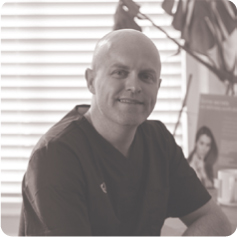References
Hear, hear for ultrasound

Abstract
Ultrasound technology is finally being used outside of the hospital setting. The simple, non-invasive and radiation-free imaging modality is now a reality in the medical aesthetic clinic. Ultrasound has been recognised as a suitable investigation in aesthetic complications since 2008 and recommended in practice since 2013. Technological advances have enabled professionals to deliver imaging in any environment. In treatment planning, delivery and aftercare, patient outcomes can be optimised. Ultrasound imaging allows reliable dermal filler identification, vascular mapping, management of vascular compromise and nodules, real-time rheology and measurement in relation to treatment outcomes. The challenges that remain relate to underpinning availability and enthusiasm with education and support. At the time of writing, there are no such mechanisms or educational programmes.

Our understanding of sonography began in the late 1700s, when two Italian zoologists discovered the acoustic orientation sense of bats (Kane et al, 2004). Almost a century later, in 1880, the Curie brothers presented the piezoelectric effect of sound waves on natural quartz (Levy et al, 2021). The application of mechanical pressure to quartz crystals generates an electrical charge on the material's surface. The converse effect, predicted by Gabriel Lippman in 1881, was subsequently proven by the Curie brothers. As such, application of an electric field to the quartz resulted in production of high-frequency sound waves or ultrasound.
The use of ultrasound in medicine began in 1942, when Karl Theodore Dussik presented work on transmission ultrasound investigation of the brain (Shampo, 1995). Subsequent works around the world helped to establish a place for ultrasound technology, but, in the 1950s, that of Donald et al (1958) in Glasgow did much to facilitate the development of practical technology and applications. Ultrasound was adopted into clinical dermatology in 1979, and it has been recognised as a means of assessing the presence of dermal filler for many years (Young et al, 2008). In 2013, it was reported that the diagnosis and management of filler nodules are greatly facilitated by ultrasonographic imaging, and, as such, it was recommended that it should become the standard of care (Cassuto and Sundaram, 2013).
Register now to continue reading
Thank you for visiting Journal of Aesthetic Nurses and reading some of our peer-reviewed resources for aesthetic nurses. To read more, please register today. You’ll enjoy the following great benefits:
What's included
-
Limited access to clinical or professional articles
-
New content and clinical newsletter updates each month


